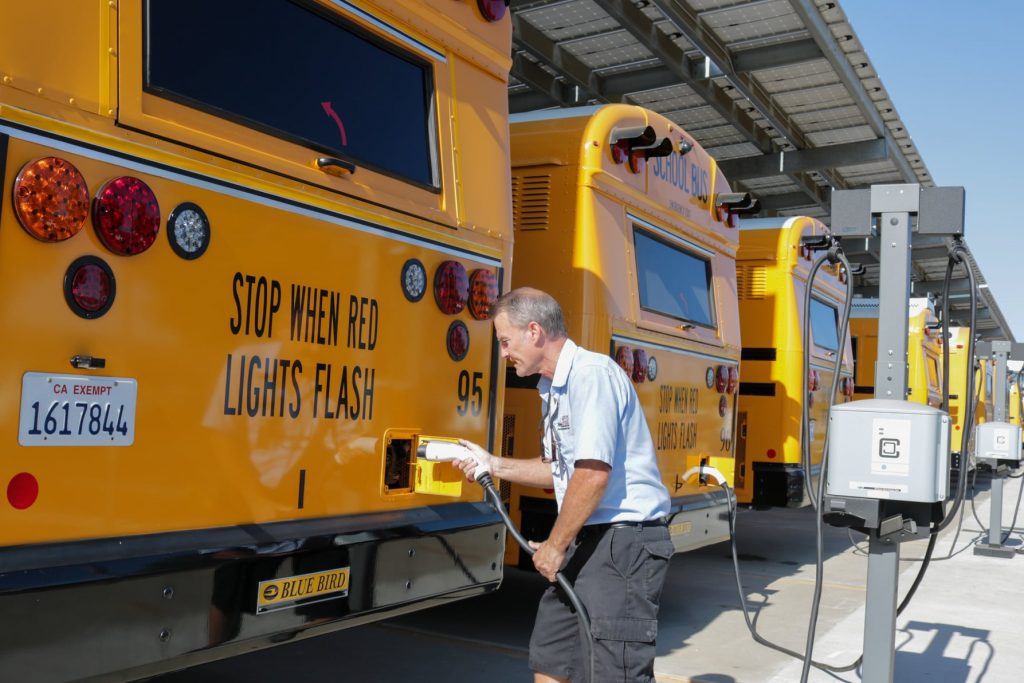
The yellow bus that was released in 1939 takes a back seat to the new green buses making their way into school districts and communities.
As global warming and climate change become more extreme, everyone is coming up with ways and techniques to help the issues that are associated with them.
One specific way electric buses are helping the school district and community is by supporting the city’s continuous efforts to reduce greenhouse-gas emissions.
According to reason.org, yellow school buses produce 14 pounds of carbon dioxide every 100 miles it travels. Green buses, also known as EV buses, eliminate the amount of carbon dioxide released, and will also reduce fuel cost.
These EV, electric vehicle, buses can be spotted by their distinguishing green-painted bird flying over the entrance door.
The current models of electric buses have the ability to fit as many as 70-90 students, as opposed to the 66 a usual yellow bus can carry, and can travel 90 miles without needing to be charged.
According to InsideEVs, the first electric bus was introduced in 1970 and could travel 31 miles. The batteries for these buses were originally attached to the back and would need to be charged again after two to three hours.
In an article by U.S.Pirg, it is reported that the Twin Rivers School District in Sacramento County gained a $7.5 million grant and became the first school district in the country to use zero-carbon emission electric buses. It now has 30 electric buses in its fleet.
The Clovis School District, as of July 2021, has purchased nine electric buses for a total of $3.17 million and plan to buy more as time goes on.
The new electric buses for Clovis Unified School District, CUSD, were funded from grants provided by San Joaquin Valley Air Pollution Control District, PG&E, and VW Mitigation Trust Fund.
According to Bakersfield news, earlier this year the California Energy Commission announced it awarded nearly $70 million to state schools to replace more than 200 diesel school buses.
Priorities of which school districts these grants and buses are given to depends on the economic need, most would be in underserved communities, and those in need environmentally, meaning areas of high industrial pollution.
It’s quoted from a Lion Electric article, a company that makes EV buses, that “these all-electric buses signify the district’s commitment to improving the local environment and the health of its communities, and we are confident that they will meet and exceed the expectations of the operators and students.”
Though it’ll take time, schools and communities see electric buses taking over transportation options in the future.








